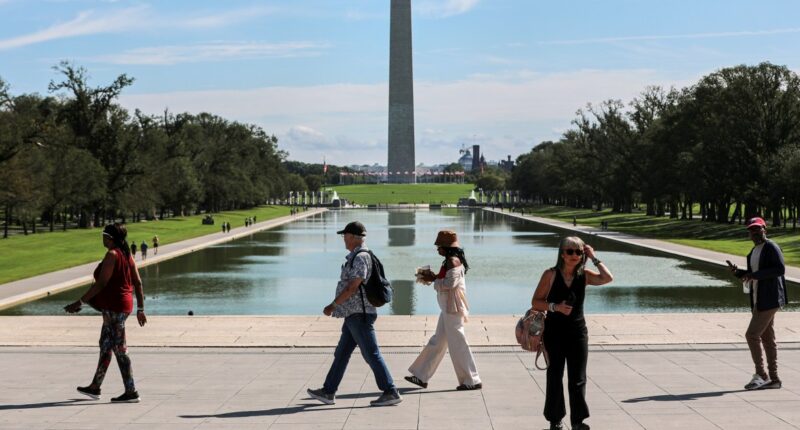Share this @internewscast.com
WASHINGTON — According to a contingency plan from the Interior Department revealed Tuesday evening, national parks will be partially open during the impending government shutdown starting Wednesday.
While open-air sites will remain accessible to visitors, staffed facilities such as visitor centers and landmarks like the Washington Monument will be closed. The Interior Department noted that essential health and safety measures will persist at open sites, which means that restrooms will be functional and trash will be collected.
The plans highlight that park roads, viewing areas, trails, and open-air memorials will be accessible, but emergency services will be limited. Additionally, the department warned that any safety, health, or resource protection concerns arising from public access might necessitate the closure of certain areas.
The contingency plan indicates that approximately 64% of the National Park Service employees will be furloughed, with remaining staff focusing on “excepted” activities such as law enforcement, emergency services, border and coastal protection, monitoring, fire response, and surveillance.
These plans were published just hours before a funding gap across the federal government. Office of Management and Budget Director Russell Vought instructed agencies in a memo on Tuesday night to start enacting their shutdown strategies.
Previous shutdowns have caused confusion about public access to national parks. During the most recent shutdown, in his first term, President Donald Trump allowed parks to remain open, with trails and outdoor areas accessible and some staff retained to maintain restroom facilities and manage waste.
Still, many park employees were furloughed, resulting in trash piling up and restrooms filling up with human waste. Some parks, including California’s Joshua Tree, eventually had to close because of damage made by unsupervised visitors.
That shutdown was the longest in U.S. history, lasting 34 days.
During the 2013 shutdown, the park service took a different approach to park access. At the time, park gates were closed and bathrooms were locked. Trash went uncollected, and fencing went up around some sites, like the Lincoln Memorial.
In both shutdowns, there was more notice about the plan, whereas the contingency plans published Tuesday night came just hours before a shutdown.
The park service workforce, which could experience significant furloughs, is already more depleted than usual. The National Parks Conservation Association, an advocacy organization, estimated in July that the park service lost 24% of its permanent staff as a consequence of the Trump administration’s efforts to reduce the federal workforce through the Department of Government Efficiency.
The park service reinstated a number of purged employees, however, The Associated Press reported this month.
The park service did not immediately respond to a request for comment Tuesday night on the number of job cuts and how many people were rehired.
The National Parks Conservation Association said Monday that the impacts of keeping parks open last time were “disastrous” and that some parks suffered damage that took months or even years to recover from.
“A government shutdown would leave our parks understaffed and vulnerable, putting our most cherished places and millions of visitors at risk. If a national park has a gate or door, it must be locked until a funding deal is reached and our parks can be staffed and protected,” it said in a news release.
Meanwhile, a letter signed by more than 40 former park superintendents urged Interior Secretary Doug Burgum to close parks, too, arguing that keeping them open during past shutdowns caused harm to them and jeopardized visitor safety.
“If you don’t act now, history is not just doomed to repeat itself, the damage could in fact be much worse,” the letter said.















